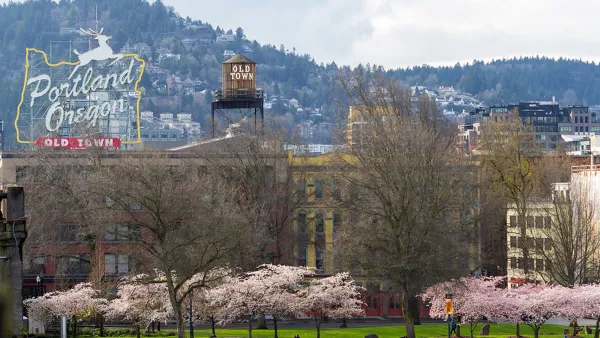Portland is expecting 123,000 new households in the city by 2035, so it's proposed a new residential infill policy to accommodate all those people. A new report argues, however, that the policy could have a chilling effect on infill development.

"The city of Portland is considering whether to change zoning rules to create more room to build affordable housing and accommodate future growth, according to an article by Kieran Hanrahan.
"Portland’s Residential Infill Project would change residential zones that only allow single-family homes to allow duplexes and triplexes," explains Hanrahan, who also describes such housing types as the "'missing middle' between houses and large apartment buildings."
An October post by Portland for Everyone described the Residential Infill Project as a solution for the proliferation of McMansions around Portland—a very different angle than the growth concerns examined by Hanrahan's article. Along those lines, Hanrahan examines a new economic study completed by Jerry Johnson, principal of Johnson Economics. According to the study, by reducing the allowed maximum size of homes the Residential Infill Project "would make redeveloping homes less appealing to developers."
FULL STORY: Portland’s Residential Infill Project May Have Caveats

National Parks Layoffs Will Cause Communities to Lose Billions
Thousands of essential park workers were laid off this week, just before the busy spring break season.

Retro-silient?: America’s First “Eco-burb,” The Woodlands Turns 50
A master-planned community north of Houston offers lessons on green infrastructure and resilient design, but falls short of its founder’s lofty affordability and walkability goals.

Delivering for America Plan Will Downgrade Mail Service in at Least 49.5 Percent of Zip Codes
Republican and Democrat lawmakers criticize the plan for its disproportionate negative impact on rural communities.

Test News Post 1
This is a summary

Test News Headline 46
Test for the image on the front page.

Balancing Bombs and Butterflies: How the National Guard Protects a Rare Species
The National Guard at Fort Indiantown Gap uses GIS technology and land management strategies to balance military training with conservation efforts, ensuring the survival of the rare eastern regal fritillary butterfly.
Urban Design for Planners 1: Software Tools
This six-course series explores essential urban design concepts using open source software and equips planners with the tools they need to participate fully in the urban design process.
Planning for Universal Design
Learn the tools for implementing Universal Design in planning regulations.
EMC Planning Group, Inc.
Planetizen
Planetizen
Mpact (formerly Rail~Volution)
Great Falls Development Authority, Inc.
HUDs Office of Policy Development and Research
NYU Wagner Graduate School of Public Service




























